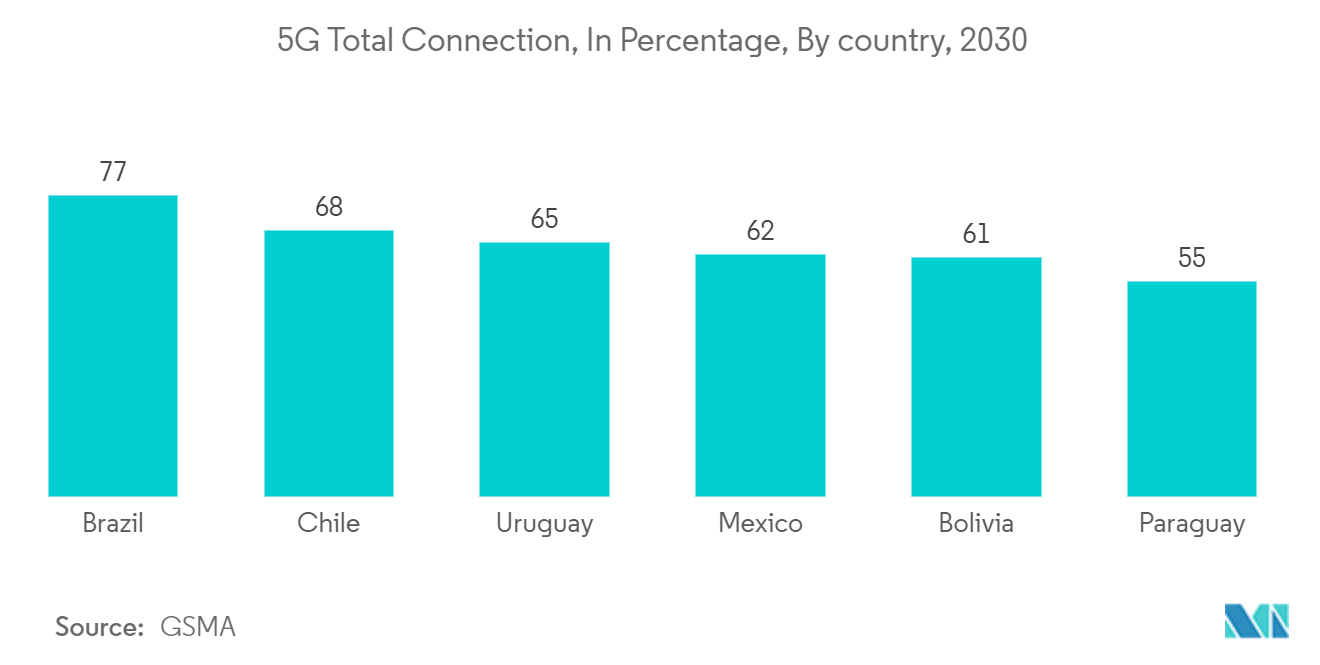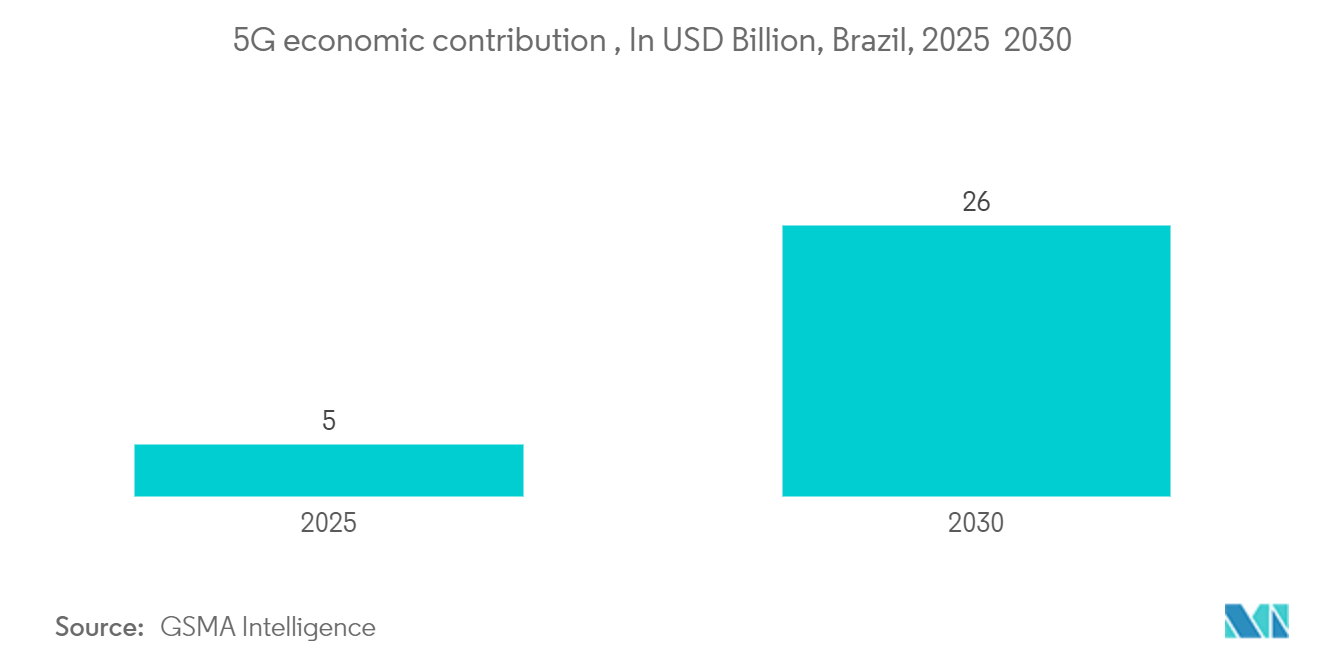Market Trends of Latin America Wireless Mesh Networking Industry
Enterprise is Expected to Record the Fastest CAGR
- In Latin America, the fastest-growing segment is driven by enterprise demand. Enterprises are increasingly opting for wireless mesh networks for secure connectivity solutions. The rise of demand for digital transformation in 5G deployment requires reliable and high-capacity networks to support technologies such as IoT, cloud computing, and big data analytics. As per the GSMA report, Brazil is expected to reach 77%, followed by Chile, with a 68% penetration rate of 5G total connections by 2030.
- Capitalizing on this trend, the market can introduce innovative solutions like intelligent traffic management, electric and connected vehicles, and upgraded public transportation systems. Strategic collaborations between technology providers and city authorities offer a unique chance to develop cohesive, eco-friendly mobility solutions.
- Governments and enterprises are collaborating on smart city projects, which invest in projects that heavily rely on wireless mesh networks to connect various IoT devices and sensors. The Mexican government's dedication to urban development, underscored by its focus on integrating smart technologies, stands out as a key market driver.
- As evidenced by initiatives like the National Digital Strategy and the Smart Cities Challenge, Mexico is proactively tackling urban issues. This emphasis on digital infrastructure, connectivity, and data-driven decision-making drives the widespread adoption of smart solutions, spanning industries from transportation and energy to healthcare and public safety.
- Several Latin American nations are adopting technology to meet their sustainability targets. They are increasingly turning to IoT devices to bolster their green initiatives, fueling a rising need for wireless mesh networks. Curitiba, known as the "green capital of Brazil," is an example. The city has made significant strides with its low-carbon endeavors, such as implementing a bus rapid transit system, establishing an extensive network of bike paths and green spaces, and promoting recycling and composting through its waste management system. Notably, Curitiba has set its targets on achieving carbon neutrality by 2050.

Brazil Holds the Largest Market Share
- The Brazilian wireless mesh networking market is expanding significantly. This expansion is due to the need for dependable and effective communication infrastructures, which are crucial to sustaining the growing network of interconnected devices in smart homes, industries, and other sectors.
- Brazilian cities are investing in initiatives gaining international recognition to facilitate a globally interconnected landscape. These efforts, often resulting from collaborative endeavors, harness digital tools and emphasize citizen involvement. Innovations like the Internet of Things (IoT) and the advent of 5G technology have revolutionized the interaction between citizens and public domains, reshaping the very essence of civic engagement. Consequently, prioritizing investments in connectivity becomes paramount, establishing the foundation for inclusive, digitally-driven governance structures. According to the data from GSMA Intelligence, 5G contribution is expected to reach USD 26 billion by 2030.
- Brazil's increasing demand for tailored private 5G networks underscores the new opportunities for the potential of 5G. Cloud-based services in Brazil are leveraging 5G for its imperative high-speed and low-latency requirements. TIM Brasil has seized on this by rolling out its cloud gaming services. Additionally, Claro Brasil, in collaboration with Ericsson and Niantic, trialed AR gaming specifically on 5G SA networks. The advent of 5G enhances the performance of wireless mesh networks and paves the way for seamless real-time applications in various sectors, from video conferencing and telemedicine to corporate and educational platforms.
- Curitiba, Brazil, received the prestigious Smart City award at the recent Smart City Expo World Congress in Barcelona. These awards spotlight advanced urban innovation projects globally. The jury lauded Curitiba's urban planning strategies, socioeconomic development strides, and commitment to environmental sustainability. As Curitiba embraces smart city initiatives, there is a growing role for wireless networking mesh, which facilitates internet connectivity and is pivotal in enhancing real-time tracking and communication within its public transportation network. Moreover, the city's streetlights, linked through WMNs, allow real-time updates on pedestrian and vehicular traffic and automatically report outages, bolstering energy efficiency and public safety.
- Many market players in Brazil are investing in advanced technologies to upgrade wireless networking mesh devices. For instance, in October 2023, at Futurecom Brazil, Latin America's premier communications exhibition, FiberHome unveiled its advanced Wi-Fi7 Home Gateway. This next-gen gateway announced remarkable enhancements in network latency, throughput, and connectivity. These improvements are poised to elevate home network experiences, aligning perfectly with the growing demands of digitalized homes.


